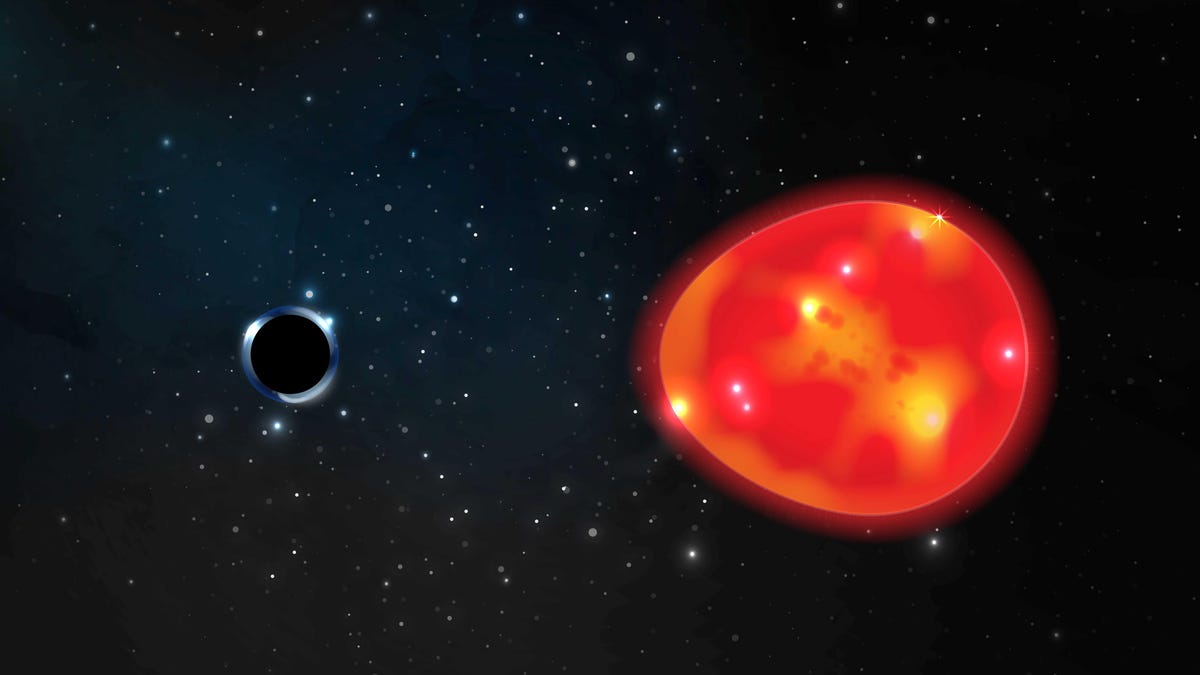The nearest black hole to Earth ever seen is a tiny 'unicorn'
Scientists have found an unusual void hiding in plain sight.

Illustration of the tiny black hole distorting a red giant star.
Scientists have spotted the closest black hole to our solar system so far, and unlike the supermassive monster that was the subject of a historic photo in 2019, this hungry little beast is much smaller and almost, well... cute.
Its unique properties and the fact that it was found in the constellation Monoceros have earned it a nickname: the Unicorn.
"When we looked at the data, this black hole -- the Unicorn -- just popped out," Tharindu Jayasinghe, a doctoral student in astronomy at Ohio State University, said in a statement.
The Unicorn is the rare tiny black hole, only about three times the mass of the sun. For a comparison, Sagittarius A, the supermassive black hole at the center of the Milky Way, is thought to be about 4 million times the mass of the sun. In addition to being among the smallest black holes ever seen, it's the nearest one to us that we know of, at just 1,500 light years away.
The black hole was essentially hiding in the open in the shadow of companion red giant star V723 Mon, which is a known variable star, meaning its brightness is known to fluctuate.
A nearby black hole as a possible explanation for the star's fluctuations had previously been dismissed because such an abyss would have to be so unusually small.
"Tharindu looked at this thing that so many other people had looked at, and instead of dismissing the possibility that it could be a black hole, he said, 'Well, what if it could be a black hole?'" explained Ohio State astronomy professor Kris Stanek.
Todd Thompson, chair of Ohio State's astronomy department, says the data shows that something is pulling on the star, distorting its shape and brightness.
"Just as the moon's gravity distorts the Earth's oceans, causing the seas to bulge toward and away from the moon, producing high tides, so does the black hole distort the star into a football-like shape with one axis longer than the other," he said. "The simplest explanation is that it's a black hole -- and in this case, the simplest explanation is the most likely one."
Jayasinghe, Thompson and Stanek are co-authors of a paper on the findings published Wednesday in Monthly Notices of the Royal Astronomical Society.
The scientists expect this could be the first in a line of new discoveries of smaller black holes now that it's becoming more clear that they actually exist. In the cosmos, unicorns might not be so rare after all.
Follow CNET's 2021 Space Calendar to stay up to date with all the latest space news this year. You can even add it to your own Google Calendar.

